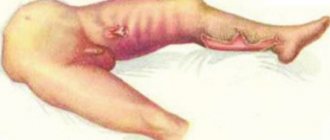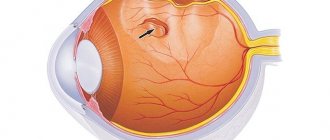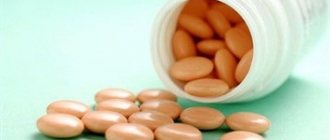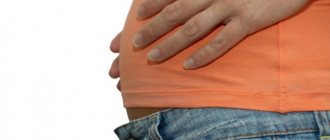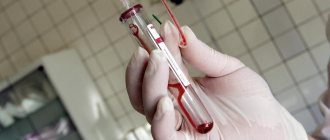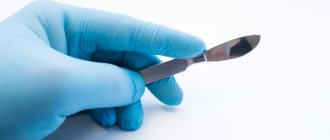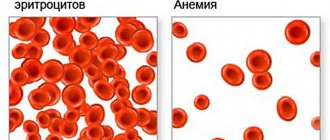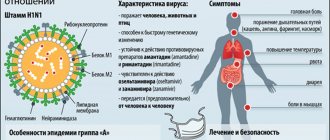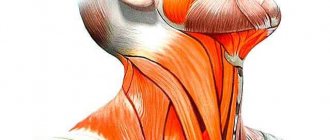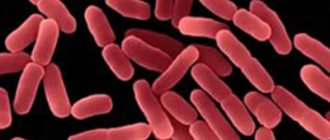Everyone develops foot problems to one degree or another. Lymphostasis, or, as people say, elephantiasis, is considered a serious disease of the lower extremities. A distinctive feature of the pathology in question is severely swollen one or both legs. The disease develops due to a violation of the outflow of lymph and its subsequent accumulation in the tissues. Treatment of this pathology is currently impossible. Doctors cannot find an effective method that would allow one to forget about the disease once and for all. Here there are only methods for removing lymph and preventing its even greater accumulation. Often they resort to surgery to remove all the accumulation in the leg. As a rule, after a certain time, the volume of the leg increases again.
Causes of diseases of the lower extremities
The occurrence of lymphostasis in the legs is due to numerous indicators of the functioning of the internal organs of the body.
Lymph retention in tissues can be facilitated by:
- pathological disorder of the functional functioning of the kidneys;
- diseases of the cardiovascular system;
- hypoproteinemia (protein levels in the blood are several times lower than normal);
- Varicose veins (promotes long-term venous insufficiency);
- congenital malformations of the lymphatic system;
- blockage of lymph vessels;
- parasitic infections;
- chronic lymphangitis (inflammation of lymphatic vessels);
- damage to the vessels of the lymphatic system (burns, injuries).
Stages
Blood circulation pathology develops in several stages:
- first stage. First, congestion is observed in the area of the fingers of the upper or lower limb. The skin does not yet change its color and easily folds. Everything returns to normal after sleep, raising the affected limb upward and lightly stroking it. This condition is easiest to correct with a massage or a special menu,
- second stage. Congestion is pronounced and is called fibroderma. The condition develops gradually over several weeks or months. The swelling does not disappear after sleep, but is eliminated with the help of a special lymphatic drainage massage. The difference between the healthy and affected limb is visible. Therapeutic nutrition for leg lymphostasis eliminates discomfort, dull pain and improves functionality,
- third stage. The most dangerous. The difference in volume between the affected and healthy limb can reach 50 centimeters. The skin is constantly tense and inflamed. Painful peeling and non-healing wounds (trophic ulcers) often appear, the surface is hot and red. Without pharmacological agents, proper nutrition, and in advanced cases, surgical intervention, gangrene quickly begins, and there is a threat of sepsis and death. Therefore, you should not be careless about swelling of the legs or arms.
What can be done if pathology of the upper extremities is detected? What treatment will help? The answers to these questions are given by a vascular surgeon after diagnosis and visual examination. If lymphostasis is diagnosed, diet is mandatory. Let's talk about it in more detail.
Symptoms of the disease
Heaviness in the legs . Staying in an upright position for many hours, prolonged exclusion of mobility, and heavy physical activity contribute to the development of a mild stage of lymphostasis. A sign of the initial stage is regular evening swelling of the legs, which subsides on its own in the morning after a night's sleep.
Skin thickening . Persistent swelling, causing pain and thickening of the skin, characterizes the disease to a moderate degree. If you press on the place of swelling, the depression will be visible for some time. The appearance of short-term convulsions is one of the striking symptoms of moderate lymphostasis.
“Elephantiasis” is a severe thickening of the limb. With severe lymphostasis, the patient’s limbs lose their natural shape. The swelling dissolves into an ugly mess due to the fact that the lymphatic drainage ceases to perform its functions. It is still complicated by the fact that various ulcers, eczema and inflammation begin to appear on the surface of the skin.
Symptoms, stages and localization of the disease
Currently, in the practice of phlebology, it is customary to distinguish three stages of lymphostasis:
- First. Characterized as lymphedema (reversible swelling).
- Second. Fibredema (irreversible swelling).
- Third. Elephantiasis or elephantiasis (persistent enlargement of the lower extremities).
The first stage of the pathological process is characterized by localization in the ankle and toes. There is swelling, but not pronounced, but easily palpable. There is no pain on palpation. It is noteworthy that in the cold season, with little rest, lymphedema can practically disappear.
The symptoms of the second stage are more pronounced; swelling spreads throughout the entire leg and does not go away after a long rest. The nature of the swelling changes, it becomes dense, and upon palpation, traces of finger pressure remain. There are also other signs of pathology: pain in the leg, a feeling of heaviness, cramps at night. The limb gradually begins to deform; severe swelling leads to the inability to bend/extend the knee. After some time, the skin changes - it acquires a bluish tint.
The clinical picture of the third stage is characterized by the proliferation of connective tissue in the skin. At the same time, the growth reaches such a size that the patient’s limb begins to resemble an elephant’s leg. At this stage, long-healing ulcerative lesions often appear on the skin.
Diagnosis of lymphostasis
Timely contact with a vascular surgeon can prevent irreversible consequences. At the slightest sign of disease, a lymphologist prescribes an ultrasound examination of the abdominal cavity and pelvic area of the patient.
To identify the location of the lesion blocking lymphatic circulation, X-ray lymphography is usually prescribed.
a Doppler ultrasound examination of the veins of the extremities is prescribed .
In the laboratory, blood is drawn, then a biochemical blood test . If necessary, the patient will be prescribed a urine sample for a similar study.
Based on the results of all the necessary studies, a competent specialist can determine the cause of the disease and prescribe the correct treatment.
Starvation
When treating lymphostasis, the doctor may recommend a rather radical method - therapeutic fasting. Within reasonable limits, this method will help cleanse the body of toxins and normalize metabolism. Typically, the course of fasting lasts 2-3 days. During this time, you need to drink as much fluid as possible. Such actions should be carried out with the approval of a doctor, since in some cases, therapeutic fasting leads to negative consequences. In addition, this fact is associated with contraindications, in which lack of nutrition will provoke a deterioration in the condition.
Drug therapy
To successfully treat a disease, before starting treatment, it is necessary to understand the cause of its occurrence. When lymphostasis is detected, it is advisable to detect the factor causing a violation of the outflow of lymph in the suffering limb.
The cycle of drug therapy may include immunostimulants:
- Drugs that help stimulate processes in blood vessels. They normalize their work and reduce tissue swelling.
- Drugs for the treatment of chronic venous insufficiency.
- Preparations with a high protein content, effective for the treatment of edema.
- Drugs are diuretics that help remove fluid from blood vessels.
- Drugs that reduce blood clotting.
- Antibacterial drugs used to prevent the development of various infections in soft tissues and feet.
In a similar article you will find information about the treatment of venous insufficiency of the lower extremities with drugs.
Do not lose sight of the fact that drug therapy is an auxiliary treatment process. To eliminate a persistent disease, a full course of treatment is required, including various procedures, diets and exercises prescribed by specialists
Nutrition for upper limb lesions
If you have been diagnosed with lymphostasis, you should review the list of foods you eat. A proper diet helps the body fight the disease, it directs all its strength to recovery and prevents the formation of side effects. Nutrition for lymphostasis of the arms, as well as legs, should contain proteins, both animal and vegetable, in sufficient quantities. Swelling can be reduced by avoiding certain foods. If you have this disease, you should not use:
- Carbohydrate-containing, fat-containing products with a high concentration.
- Dishes cooked in a frying pan with vegetable oil, spicy dishes.
- Salty foods (preferably avoided completely).
- Alcohol.
- Coffee.
- Smoked meats.
The menu for lymphostasis of the upper and lower extremities is the same. The diet, developed from the daily norm of the body’s needs, consists of:
- fermented milk products (yogurt, kefir, sourdough, fermented baked milk, cottage cheese, cheese). Please note - fat content should be minimal. You can prepare the products yourself at home using a multicooker or yogurt maker;
- meat dishes. Eat lean meat, preferably dietary meat. Avoid pork and lard. Replace them with beef, rabbit, chicken. Steam, bake, boil. Do not use a frying pan. Fried meat will only cause harm;
Antioxidants activate local protective forces, accelerate the removal of metabolic end products from the interstitial fluid and intestines
- seafood. Enrich the body with minerals, trace elements, amino acids. Fish of the salmon family, red caviar, sea fish (hake, notothenia) are useful;
- representatives of legumes (beans, peas, beans);
- porridge (buckwheat, oatmeal, rice);
- fruits, vegetables (it is recommended to eat more citrus fruits);
- Wholemeal bread (gives the body fiber and B vitamins).
A special diet will help you achieve excellent results and quick recovery. Swelling will begin to gradually go away by adjusting your diet. Proper nutrition contributes to a healthy lifestyle. Developing a daily diet is an integral part of complex therapy for illness.
The main thing is to see a doctor in time. The composition and ratio of the above products can be changed depending on the stage of the disease and the patient’s recovery trend. The diet for hand lymphostasis should include a large amount of antioxidants; they will help remove decay products, interstitial fluid accumulation, and residual harmful substances.
Physiotherapeutic procedures
Physiotherapy is a procedure that uses elements of physical influence on the source of the disease. The physiotherapeutic course of treatment is based on complex and individual application.
Massage is a procedure aimed at relieving congestion and improving fluid permeability. It is important that the procedure is carried out by an experienced specialist who works manually using various devices.
Magnetic therapy is a procedure that affects the focus of the disease with a constant and alternating magnetic field. Acts as an anti-inflammatory and analgesic treatment method. Helps reduce swelling.
Laser therapy is the therapeutic use of an optical laser source. The purpose of these procedures is to normalize protein metabolism and provide an anti-inflammatory effect.
Wearing a bandage or compression bandage is mandatory after physiotherapy procedures. They help improve blood and lymphatic circulation in the affected limb. We have previously talked a lot about how to improve blood circulation in the legs.
Sample menu for the week
Patients on forums ask the question: what kind of nutrition should one have for lymphostasis? What can and cannot be eaten if you are sick? Let's give an example of a diet designed for seven days.
Monday
- Morning meal. Porridge with added milk. Brown bread with butter.
- Snack. Any fruit.
- Lunch meal. Chicken broth, pieces of fish baked with zucchini, tomatoes, eggplants, bell peppers in the oven.
- Second snack. 200 ml of sourdough or fermented baked milk.
- Dietary food in the evening. Light seafood salad, include more greens, it is recommended to season it with lemon. Applesauce with cottage cheese in the oven.
When dieting, special attention should be paid to the following products: low-fat fish, seafood
Tuesday
- Morning meal. One boiled egg, toast with butter, a cup of green tea with lemon.
- Snack. Fruit salad dressed with yogurt. 200 ml kefir, sourdough.
- Lunch meal. Meat beef broth. A portion of porridge, stewed fish with vegetables.
- Second snack. Low-fat curd mass with the addition of sour cream. A substitute is beans with mushrooms in tomato sauce, prepared in a slow cooker.
- Dietary food in the evening. Porridge with milk, for example, oatmeal.
Wednesday
- Morning meal. Steamed fish cutlets. Wheat porridge.
- Snack. Salad with tomatoes, cucumbers. Season with olive oil.
- Lunch meal. Fish soup. Boiled chicken, rice cooked with vegetables in a slow cooker.
- Second snack. Fruit puree. Kefir.
- Dietary food in the evening. Yogurt or curd dessert.
Nutrition for lymphostasis should contain a large amount of proteins and fast carbohydrates
Thursday
- Morning meal. Boiled chicken fillet, fresh vegetable salad, dressed with olive oil.
- Snack. Fresh fruit, to your taste.
- Lunch meal. Boiled potatoes, chicken fillet baked in the oven, beet salad.
- Second snack. Several fruits.
- Dietary food in the evening. 200 ml green tea, cottage cheese casserole, add dried fruits if desired.
Friday
- Morning meal. Rice porridge with milk, a cup of black tea.
- Snack. Fruit puree.
- Lunch meal. Steamed beef cutlets, buckwheat porridge, salad of vegetables, olives, feta cheese.
- Second snack. Vegetable salad, add tomatoes, season with soy sauce.
- Dinner. Cottage cheese baked with pumpkin and rice.
Saturday
- Morning meal. Six boiled quail eggs, beet salad with feta cheese, dressed with olive oil, a cup of green tea, black bread toast.
- Snack. Vegetables stewed in a slow cooker.
- Lunch meal. Chicken broth with potatoes, fish stew with zucchini, bell pepper in the oven.
- Second snack. Manna with the addition of citruses.
- Dinner. Boiled chicken breast, fresh tomatoes, cucumbers.
Sunday
- Morning meal. Fried eggs with vegetables without butter, black bread toast, 200 ml of black tea.
- Snack. Apples in the oven with the addition of curd mass.
- Lunch meal. The first dish is prepared from sausage, cheese, with the addition of herbs. Vegetable salad (use fresh ingredients).
- Second snack. Fresh fruit juice.
- Dinner. Baked steak (fish with lots of vegetables).
Use olive oil and flaxseed oil (they contain Omega 3 and Omega 6, which strengthen muscles and lymph nodes). If you are on a strict weight loss diet, you should consume shark liver oil. It is recommended to swap the foods listed in the diet. It is necessary to correctly determine what is recommended to be consumed and what is not. Therefore, before creating a menu, consult a nutritionist. He will write down an approximate diet for the week, based on which you will select your program.
Originally posted 2017-02-03 08:34:00.
Traditional methods of treating lymphostasis
Lymphatic drainage - physical exercises, are allowed only in the first stage of the disease:
- Lie on your back. Raise your legs on a high pillow and hold in this position for 15-20 minutes;
- Raise the leaking limb as high as possible and hold it as long as you can.
- Before going to bed, place the affected limb at such a height that it is located above the level of the heart.
To improve the condition of the skin during lymphostasis, baths help:
- Prepare a decoction of string. Take baths in the morning and evening for half an hour. Duration of use is up to 4 weeks.
Pour a few tablespoons of ground string into boiling water and leave to cool. Then express.
Traditional recipes for oral administration are very helpful in treating the disease. Products rich in vitamins C (cranberries, rosehips, currant leaves) and P (rowanberries, currants, grapes, pomegranates). Red foods help thin the lymph.
In order to improve lymph flow in the vessels 20 minutes before meals, it is useful to take diuretic decoctions :
- a few tablespoons of dry rose hips and pour into a thermos. Pour boiling water over and leave for a couple of hours. Then filter and take 100 ml of infusion before each meal.
- over rosehip and currant leaves in equal quantities. Let it brew until it cools completely. Filter and take before each meal.
- Pass garlic cloves Add the same amount of honey and mix. Place in a dark place for several days. Take orally 4 minutes before each meal.
In severe stages of the disease, with the formation of inflammatory processes, compresses from medicinal mixtures will help:
- Pour boiling water over a few tablespoons of dandelion roots. Leave until completely cool. Soak a sterile bandage in the broth and apply to the sore spot for half an hour. Wrap your leg in a warm blanket and keep it elevated.
If a disease occurs, the first necessity is to maintain hygiene of the limbs, this will avoid infection of the lymph:
- Remove calluses;
- Carefully cut your nails;
- Use individual instruments that must be disinfected before use.
Avoid body overheating and household damage. Any minor scratches or cuts can be a source of infection. Minimize contact with animals.
Crossing your legs while sitting is contraindicated. This position promotes stagnation of lymph.
A direct indication is maintaining a healthy lifestyle. Engage in active exercises (as far as the stage of the disease allows), walking and swimming. With moderate physical activity, muscle contraction occurs, promoting lymphatic drainage.
What can and cannot be eaten during treatment?
List of foods that are recommended to be consumed for lymphostasis:
- Lean meat. It is healthy to eat chicken breast - it contains a lot of protein, which is easily absorbed by the body. You can include turkey, rabbit carcass and young beef in the menu.
- Seafood. They contain many useful microelements and enzymes. They eat seaweed and seaweed, red fish, cod liver, shrimp, squid, crab meat and oysters.
- Raw or steamed vegetables. Legumes are beneficial in treatment. They also eat cucumbers, tomatoes, beets and Chinese cabbage. Instead of dressing, olive or flaxseed oil is recommended.
- Fresh berries and fruits. They contain enough enzymes and vitamins of groups A, B, C, E. Particular emphasis should be placed on apples, pears, peaches, strawberries and blueberries.
- Cereals. It is mainly recommended to eat buckwheat, millet and rice porridge.
List of foods that should not be consumed by a patient with lymphostasis:
The patient's diet should not include fast food.
- foods high in fat and carbohydrates;
- River fish;
- smoked meats;
- canned food;
- fast food (hot dogs, fries, hamburgers);
- confectionery and baked goods, desserts with excessive amounts of sugar;
- vinegar and hot spices;
- alcoholic and energy drinks.
Therapeutic diet for lymphostasis
Food consumption during treatment of the disease should be aimed at increasing immunity and diluting the lymphatic system as much as possible.
A properly balanced diet will increase the chance of a favorable cure and reduce the preconditions for complications.
Proper nutrition standards:
The first foods that should be excluded from your usual diet are bitter and hot peppers, salt, marinades and all those foods that contribute to fluid retention in the body. Thirsty foods should also be an exception.
- A sufficient amount of proteins that provide the body's resistance against various diseases. Proteins should be of both plant and animal origin.
- A complete set of amino acids that contribute to the melting of proteins and their digestibility by the body.
- Consumption of fats in the daily diet in the required quantity. Vegetable and animal fats help increase the functioning of lymphatic drainage in the abdominal cavity. The patient’s daily norm is 10 grams of animal fat and 20 grams of vegetable fat.
- If the patient is overweight, then in this case a nutrition program specially developed by nutritionists is needed.
- Reduce your intake of foods containing carbohydrates as much as possible
How is the treatment carried out?
Treatment of lymphostasis of the lower extremities is carried out in the inpatient department of vascular surgery or under the supervision of a phlebologist on an outpatient basis, in the absence of severe symptoms.
Drug treatment
The main goal of the therapeutic effect is to restore as much as possible the outflow of lymphatic fluid in the tissues of the diseased limb. For this purpose, the specialist prescribes a drug that is a phlebotonic. In vascular practice, they often resort to drugs called Vasotec and Diosmin. Used for venous insufficiency and disruption of the lymphatic system. In addition, the drugs can be used during pregnancy, as they are quite well tolerated.
If the first stage of the disease is diagnosed, they resort to the following medications: Paroven, Troxerutin or Troxevasin. Their action is aimed at increasing vascular tone and normalizing lymph outflow.
In addition to the main treatment, homeopathic and herbal remedies can be prescribed. In the first option, this drug is Lymphomyazot - it improves lymphatic drainage, in the second - Glycoside, based on horse chestnut.
Medicines that have anti-inflammatory and anti-edematous effects are also prescribed, most often Wobenzym.
If necessary, the doctor prescribes diuretics, but they should be used with extreme caution. Diuretics are not always effective against lymphostasis.
If inflammation of bacterial etiology has been established, antibiotics for injection are used - Amoxicillin clavulanate, Ampicillin.
Treatment of lymphostasis of the lower extremities is always comprehensive, otherwise therapy may be ineffective. It is important for the patient to understand that self-medication is highly discouraged in order to avoid complications.
Treatment with folk remedies
It is immediately worth noting that any traditional medicine recipes do not have the effectiveness of drug treatment, therefore, they can be used as an addition to the main therapy. The most well-known folk methods for lymphostasis of the lower extremities include the following:
- Compress based on baked onions. The vegetable is baked together with the husk, then ground to a pulp and mixed with a small amount of birch tar. Use at night for 8-12 weeks.
- Garlic broth. A glass of peeled garlic is crushed, then 400 ml of liquid natural honey is added and left in a dark place for 7 days. Take a tablespoon daily 3 times a day.
- A decoction of medicinal plants. In equal proportions, you need to take the leaves and inflorescences of dandelion, plantain, wild carrots, and knotweed grass. Plants are poured with boiling water at the rate of 500 ml per five teaspoons of plants. Leave for at least 8 hours and take 50 ml 4 times a day.
Onions and garlic in the treatment of leg lymphostasis
Physiotherapeutic procedures in the treatment of lymphostasis of the lower extremities
Physiotherapy procedures are considered an effective addition to the main treatment; they accelerate the process of restoring normal functioning of the lymphatic system, reduce the severity of the inflammatory process and swelling.
The most commonly used procedures are:
- Hydromassage. It can also be found under the name of underwater massage. It is performed using a stream of water of a certain intensity.
- Magnetotherapy. The effect is based on a static magnetic field. Contains various techniques.
- Laser therapy. During the manipulation, a special device is used - a laser, the operation of which is based on radiation in the optical range.
Massage for lymphostasis of the lower extremities
Prevention and prognosis of the disease
Diseases of the kidneys, cardiovascular system, trauma and oncological diseases of the mammary glands are prerequisites for the development of lymphostasis of the extremities. Timely examination, correct and responsible approach to treatment predicts recovery.
But the patient will have to be observed throughout his life by specialists who will prescribe cycles of maintenance therapy that will stimulate the lymphatic system to function fully.
Fact: Lymphologists around the world pay special attention to the factors of the onset and course of the disease, since the largest proportion of patients suffer from lymphostasis of the lower extremities. Of the 10 percent of the population suffering from lymphedema, the majority are women
Classification of forms of the disease
There are primary and secondary forms of pathology.
Primary lymphostasis, that is, congenital lymphedema, develops for the following reasons:
- congenital anomalies in the structure of lymphatic ducts and highways;
- underdevelopment of capillaries;
- valve failure;
- hereditary predisposition.
Paired limbs are usually affected. If lymphatic swelling of the arm occurs, signs of lymphostasis may also appear on the second arm. Congenital lymphedema can be diagnosed as early as adolescence.
Secondary lymphostasis occurs after injuries or pathologies of the lymphatic system, which was initially normally formed. In women, the condition may worsen after a mastectomy. Secondary lymphedema develops mainly on one limb. In most cases, the disease affects the area from the lower part of the leg to the knee and has an inflammatory-infectious or post-traumatic etiology (nature).
Complications
Any disease is scary primarily due to complications caused in the absence of adequate treatment. Even primitive flu, which humanity has been successfully coping with for several decades, has pathological consequences. Complications are manifested by the following phenomena:
- Ulcers. Patients are susceptible to the formation of skin ulcers, which become trophic in nature. Fungal foot infections are common.
- A terrible complication is sepsis (blood poisoning), which develops as a result of infection. The pathology is difficult to treat due to resistance to antibiotics. Provokes septic shock, death.
- An additional complication is angiosarcoma. This is a highly active malignant tumor with an extremely dismal prognosis and high mortality. It accompanies lymphedema in ten percent of cases.
Complications that may occur due to lymph stagnation
Impaired lymph flow is considered a difficult disease to treat, since the area of edema quickly grows with connective tissue, which prevents the normalization of the size of the affected limb. Elephantiasis does not allow full movements in the joints, gait changes, exercise tolerance is impaired, articular surfaces are deformed due to increased pressure and weighting of the leg.
The skin receives insufficient nutrition and innervation, and ulcerative defects appear on them. Low immune defense provokes tissue infection, the extreme manifestation of which is considered generalized sepsis. This complication is fatal.
Under conditions of lymphostasis, a low degree of tissue cleansing from toxic compounds, and poor functioning of the cellular immune system, lymphosarcoma occurs more often than under other conditions, a tumor characterized by a high degree of malignancy.
Surgical intervention
The operation is indicated when there is an objective need: a congenital malformation of the lymphatic system, with fibrosis at the third stage, anatomical deformation of the limbs, after erysipelas. Ways to help include:
- Debulation, or a decrease in the amount of fluid in the tissues.
- Phlebectomy is being considered.
- Liposuction – for fibrosis. Reduction of subcutaneous tissue.
- Pressotherapy.
- Plasmapheresis.
- Tunneling is the artificial outflow of lymph into neighboring tissues through artificial channels. There are temporary and permanent drainages. Applicable only if other methods are ineffective.
- Insular dermatofasciolipectomy - removal of the affected areas along with subcutaneous tissue that has undergone structural changes. The wounds are covered with healthy skin, often transplanted from areas unaffected by the disease. The operation is preceded by liposuction.
Recommendations after surgery:
- comfortable shoes;
- after plasmapheresis, adequate nutrition;
- drinking plenty of fluids;
- resting the legs.
Development mechanism
The development of lymphostasis of the lower extremities is based on stenosis (narrowing) of the lymphatic vessels, valve dysfunction, or blockage, therefore the free outflow of fluid from the tissues is impaired. It accumulates in the intercellular space and edema forms.
In all cases, the essence of the disease is precisely this; only the etiological (root cause) factors differ, of which there can be many, and at the same moment.
- As a rule, the disorder develops as a result of parallel ongoing venous insufficiency. For example, against the background of already existing varicose veins, although not always.
- Slightly less often, the culprit of the deviation is infection. Staphylococci are especially dangerous in this regard, although other microorganisms, including tuberculosis bacteria and E. coli, do not stand aside.
- The triad of the most common causes of lymphostasis is crowned by congenital insufficiency of the functioning of the vessels of the same name that conduct fluid. The defects are represented by hypoplasias of varying severity. Usually we are talking about underdevelopment of the structure, its small diameter compared to the norm, which is manifested by lymph retention in the tissues.
In the latter case, it is somewhat more difficult to cope with the disorder, especially since the use of medications will not be effective; prompt correction is required.
The disease does not develop overnight; it is always a chronic, often protracted pathology. It takes years to form, manifests itself sluggishly, with swelling of unknown origin that goes away on its own, you just have to rest.
Further more. The symptom is constantly present, a pronounced accumulation of fluid and tissue growth in one leg begins; less often, two lower extremities are affected at once.
The process ends with the so-called elephantiasis - a critical increase in the size of tissues and their volume. Why the disease is called this way is clear and without explanation.
At the same time, the pathological process is also accompanied by trophic disorders (insufficient tissue nutrition). There is a possibility of necrosis and gangrene. Therefore, it is impossible to do without specialized therapy from a vascular surgeon.
It is extremely rare that a disease develops rapidly; this is rather an exception.
This is observed, for example, when a lymphatic vessel is blocked by eggs of parasitic helminths, especially often in African countries, including unprepared tourists.
But more often it takes from 5 to 12 years to develop the final state of elephantiasis. Plus or minus.
Cause
Lymphostasis of the hand or other part of the body is congenital or acquired. If the lumen of the lymphatic vessels is small, there are natural circulation pathologies, overgrowth of pathways, hyperfunction of nodes, then these are individual characteristics. Some of them are formed during the prenatal period. For example, with amniotic constrictions, compression of blood vessels is observed. Therefore, the liquid cannot circulate normally.
The development of acquired pathologies of the system is provoked by a number of factors:
- improper regeneration of the damaged area after a fracture or surgery. Sometimes surgeons simply cross the vessels, and lymph accumulates in the interstitial space, causing swelling;
- consequences of thermal, chemical, sunburn or radiation exposure;
- circulatory pathologies: varicose veins, thrombosis, thrombophlebitis, trophic ulcer;
- neoplasms of a malignant or benign nature of the lymphatic or circulatory systems;
- infection by helminthiasis, viral or purulent-inflammatory diseases of the skin, musculoskeletal system. For example, when a microscopic parasite enters the lymphatic system, it causes elephantiasis. It is characterized by excessive growth of the affected limb;
- treatment of cancer with radiation therapy and surgery (for example, mastectomy for breast lesions);
A diet rich in fatty foods negatively affects the lymphatic system, overloading it.
- excess body weight;
- pneumonia or tuberculosis;
- injury or injury to a body area;
- physical inactivity;
- paralysis resulting from bed rest for a long time.
It is unrealistic to insure yourself against the effects of all factors, but anyone can prevent the progression of the disease with the help of diet.
Why does pathology occur?
Lymphostasis is a disease of the lower and upper extremities; it can be congenital or acquired with age due to the development of pathological processes in the body and diseases. Lymphostasis of the lower extremities is a circulatory disorder in which lymph cannot circulate normally through peripheral vessels.
- undergone surgical operations to remove oncological tumors;
- inflammatory processes;
- tumors on organs in the pelvis;
- excessive body weight;
- mechanical or chemical injuries;
- congenital pathologies of the lower extremities.
One of the main reasons for the appearance of lymphostasis in the lower extremities is a disruption of the circulatory process due to clogging of blood vessels with blood clots or cholesterol plaques. Venous insufficiency, or varicose veins, causes the lymphatic vessels to dilate to compensate for the obstruction of the lymph.
[ads-pc-1][ads-mob-1]
The disease may be a consequence of mechanical injuries to the legs or burns, which were accompanied by damage to the vessels of the lymphatic system. Cancerous tumors on the soft tissues of the legs or the presence of severe inflammatory processes lead to compression of the vessels, which disrupts the process of lymph outflow in them.
Lymphostasis may appear as a result of previous erysipelas of the lower extremities or due to a congenital anomaly - Klippel-Trenaunay-Weber syndrome. With a large body weight, compression of the lymphatic vessels of the small pelvis occurs, as a result of which lymphostasis inevitably begins to develop.
Only the attending physician can prescribe medications for lymphostasis; any attempts to independently select medications or neglect of conservative methods in favor of traditional medicine can lead to serious complications. Drug therapy has a positive effect at any stage of the disease, the main thing is to choose the right drugs that not only will remove the unpleasant symptoms of lymphostasis, but will also get rid of the cause of its occurrence.
Treatment of lymphatic edema of the lower extremities is not limited to taking one drug; for a positive effect, it is necessary to carry out complex therapy, including the use of several groups of drugs with different spectrums of action. The main drugs prescribed for lymphostasis are benzopyrones, diuretics, phlebotropes, coumarins, and drugs that have an antibacterial effect.
In addition to drug therapy, it is necessary to treat lymphostasis of the lower extremities with a whole range of measures. The patient needs to constantly wear compression stockings or tighten his legs with a bandage, carry out physiotherapeutic procedures, change his diet, and remember to take vitamin complexes that restore the tone and elasticity of the lymphatic vessels.
The main reason for the appearance of pathology of the lymphatic system is a violation of the process of lymph outflow, and first of all, the patient is prescribed venotonic drugs. The main drugs in this group:
- Venarus;
- Detralex;
- Venodiol.
Venotonics contain active components such as flavonoids, hesparidin, and diosmin. Detralex helps relieve the symptomatic picture of lymphostasis - pain, an unpleasant feeling of heaviness, convulsive muscle contractions, trophic disorders. The course of treatment is chosen individually.
Some drugs from the venotonic group include horse chestnut - Venastat, Reparil, Aescin, Venen. These products help reduce swelling, fatigue, and relieve excessive tension in the lower extremities that occurs at the end of the day and in patients with excessive body weight. The main purpose of venotonics is to improve blood circulation and restore the process of lymph outflow in blood vessels, but they do not treat the root cause, therefore they are used as one of the main, auxiliary methods of drug treatment.
Angioprotectors are drugs that help restore the normal state of the walls of lymphatic vessels. Their excessive expansion and decrease in tone is due to the fact that the lymphatic system itself tries to compensate for the insufficient passage of lymph and fluid by expanding its channel, but this is fraught with loss of elasticity. The main active substances of angioprotectors are rutin and ascorbic acid. The drugs prescribed to patients are Bioflavonoid and Troxerutin.
Angioprotectors relieve severe swelling of the soft tissues of the lower extremities, relieve inflammation, and help normalize the tone and elasticity of the walls. After a course of treatment, the patient’s blood circulation improves and oxidative reduction processes are normalized.
Drugs of the medicinal group of angioprotectors stabilize the concentration of hyaluronic acid in cell membranes. The drugs have 3 release forms - tablets, solution for intramuscular (or intravenous) administration and gels. The doctor decides which method of using the drug to choose, since some forms of the drug are not suitable for the patient due to the inability to give an injection or take a pill due to taking other drugs that do not interact with the active substances of the angioprotector.
The inflammatory process that accompanies lymphostasis brings a person severe discomfort, pain and complicates the course of the disease. To relieve inflammation, the patient is prescribed medications that contain special enzymes. These substances not only relieve inflammation, but also eliminate pain, help reduce swelling of soft tissues, and restore the immune system. The main medicines with enzymes are Phlogenzym, Wobenzym.
Medicines of this medical group are especially necessary for people whose lymphostasis is complicated by a predisposition to the formation of blood clots that clog blood vessels and interfere with the normal process of lymph outflow.
In addition to the main anti-inflammatory effect, enzymes help remove toxic substances from the body, and especially from the lymphatic system, normalize metabolism and restore necrotic soft tissue, supplying them with the necessary amount of nutrients and oxygen.
The course of medication is selected by the attending physician depending on the degree of development of lymphostasis, the severity of the symptomatic picture and the presence of concomitant diseases of the circulatory system, which are characterized by the formation of a large number of blood clots.
Action of coumarins
Coumarins are a group of drugs that have a wide spectrum of action and are prescribed to patients for the treatment of lymphostasis. Coumarins are not drugs that can be used in monotherapy. Their main action is aimed at enhancing the effect of the main drugs. Patients are prescribed oxycoumarins, which affect the degree of blood clotting, helping to prevent blood clots.
According to recent clinical trials, the presence of coumarins in complex drug therapy for the treatment of lymphostasis does not particularly affect the positive outcome.
Wearing compression stockings has a greater effect. However, some patients who are faced with the problem of lymph stagnation in the vessels of the lower extremities and taking coumarins note that their condition has improved significantly. The decision about the need to take coumarins is made by the doctor; in most cases, medications in this group are prescribed to patients with a chronic form of the disease or with a severe symptomatic picture.
Diuretics
Diuretics are drugs that have a diuretic effect. Prescribed to all patients undergoing treatment for lymphostasis. The disease is accompanied by severe swelling of the soft tissues, and excess fluid can only be removed from the body through the kidneys. Taking diuretics gives quick and effective results, since excess fluid immediately leaves the lymphatic bed.
Excess fluid, which accumulates in the lymphatic system and abruptly leaves it under the influence of the active components of diuretics, can accumulate again under the influence of intercellular transudate. In such cases, it will be much more difficult to remove the fluid from the system again, and the swelling may increase. Therefore, taking diuretics should be strictly in compliance with the dosage selected by the attending physician.
It is necessary to take diuretics with a vitamin complex, and the main emphasis is on maintaining the required concentration of potassium and calcium, since these enzymes are actively washed out of the body along with urine.
When is surgery required?
If conservative therapy is ineffective, the swelling increases, the doctor decides to perform surgery.
Before the actual surgical intervention, the lymphatic vessels are stained with a blue dye in order to better see the course and degree of their expansion. The dye is usually injected into the interdigital spaces of the foot.
All damaged areas are then removed by bandaging or laser cauterization.
During the operation itself, it is possible to perform a number of additional procedures (liposuction, formation of drainage tunnels for proper lymph drainage, lymphoid tissue transplantation).
The rehabilitation period implies compliance with measures to prevent relapse of the pathology. Lymphatic drainage massage, exercise therapy, and rest are recommended.
Antibacterial drugs
Patients undergoing treatment for lymphostasis are forced to take a large number of medications, follow preventive measures for the development of complications, go to physical therapy and radically change their diet. But only an integrated approach to the treatment of lymph stagnation in blood vessels can provide the necessary, positive effect.
In certain cases, the cause of the development of lymphostasis is the contact of infectious, pathogenic microflora on the soft tissues of the lower extremities. In the presence of severe inflammatory processes that lead to necrosis of soft tissues, the patient is prescribed antibacterial drugs.
In most cases, infection with gram-positive cocci leads to the development of lymphostasis. The infection penetrates into the tissues of the lower extremities during injuries, wounds or when erysipelas occurs. Along with antibacterial drugs, it is necessary to take vitamins for rapid tissue restoration and the protective functions of the immune system.
Pathological processes in the lymphatic system without timely treatment can lead to very serious consequences. Violation of microcirculation in the lymphatic system leads to irreversible processes in the pelvic organs.
Treatment of the pathology must begin immediately after the first symptoms are detected. When lymphostasis is advanced, it can become chronic, and then it will be impossible to cure the disease, and the patient will be forced to take medications all his life to alleviate his condition. Taking medications on your own, without a doctor’s prescription, is strictly prohibited, as is neglecting the prescribed dosage.
Authorized Products
The diet for lymphostasis of the lower extremities includes:
- Dietary types of red meat (veal, beef), poultry (turkey, chicken), rabbit.
- Various types of lean river/sea fish, seafood (crabs, shrimp, squid, mussels, oysters) and seaweed.
- Products containing unsaturated fatty acids - cold-pressed vegetable oils, red fish, nuts, fish oil, flax seeds.
- Cereals in the form of whole grain bread/crisps, cereals or sprouted.
- Dairy/lactic acid products (non-acidic low-fat cottage cheese, fermented milk drinks).
- Vegetables/fruits - zucchini, tomatoes, carrots, bell peppers, garden greens, parsley, celery, dill, potatoes in various forms (boiled, cheese in salads or baked), berries/fruits - apricots, apples, watermelon, citrus fruits, grapes, black currant, cherry.
- As drinks - water with lemon, large-leaf green tea with milk, compotes, freshly prepared juice of beets, pumpkin, carrots, decoctions of lingonberries, rose hips, strawberries, hawthorn.
Vegetables and greens
eggplants 1.2 0.1 4.5 24 boiled cauliflower 1.8 0.3 4.0 29 boiled potatoes 2.0 0.4 16.7 82 watercress 2.3 0.1 1.3 11 leaves canned grapes 4.3 2.0 11.7 69 carrots 1.3 0.1 6.9 32 cucumbers 0.8 0.1 2.8 15 olives 0.8 10.7 6.3 115 salad peppers 1.3 0.0 5.3 27 boiled beets 1.8 0.0 10.8 49 celery 0.9 0.1 2.1 12 tomatoes 0.6 0.2 4.2 20 dill 2.5 0.5 6, 3 38 garlic 6.5 0.5 29.9 143
nuts 15.0 40.0 20.0 500 sesame 19.4 48.7 12.2 565 dried apricots 5.2 0.3 51.0 215 sunflower seeds 22.6 49.4 4.1 567 prunes 2.3 0, 7 57.5 231
Meat products
beef 18.9 19.4 0.0 187 beef liver 17.4 3.1 0.0 98 veal liver 19.2 3.3 4.1 124 lamb 15.6 16.3 0.0 209 rabbit 21.0 8.0 0.0 156 beef stew 14.1 17.4 0.0 214
Bird
chicken breast 23.2 1.7 0.0 114 chicken liver 20.4 5.9 1.4 140 turkey 19.2 0.7 0.0 84 turkey liver 19.5 22.0 0.0 276 goose liver 15 .2 39.0 0.0 412
Fish and seafood
brown algae 1.7 0.6 8.3 43 pink salmon 20.5 6.5 0.0 142 red caviar 32.0 15.0 0.0 263 cod caviar 24.0 0.2 0.0 115 pike caviar 17 .3 2.0 0.0 87 squid 21.2 2.8 2.0 122 shrimp 22.0 1.0 0.0 97 salmon 19.8 6.3 0.0 142 mussels 9.1 1.5 0 .0 50 seaweed 0.8 5.1 0.0 49 herring 16.3 10.7 – 161 cod (liver in oil) 4.2 65.7 1.2 613 trout 19.2 2.1 – 97
Dinner is served
There is no need to despair if you are faced with a choice between one product or another.
Now we will look at specific examples of what can be served on such a diet:
- Meat. You need to take low-fat varieties - veal and beef, rabbit and chicken, as well as turkey. Boil or steam – everything is very banal, although no less tasty with a salad of fresh vegetables. We will go the other way. Take a small amount of sea salt and grind it with spices in a mortar: dill, parsley, turmeric, fennel. Add a few tablespoons of olive (or other vegetable oil) to this mixture and rub over the cooked meat. Leave to marinate for an hour and a half. Then we pack it in foil or a baking sleeve, you can use pots or a saucepan. Place in the oven until done.
- Fish. Boiled or steamed - a classic of the genre. But baked in the same sleeve, with lemon juice and rosemary - this is a real culinary masterpiece. Even those who are not on such a diet will claim this dish.
- Vegetables can be eaten both in salads and in the form of stews, casseroles, side dishes for meat or fish. The recipe for the most amazing stew does not require any special culinary knowledge or products. It can be served with rice, buckwheat, millet or pearl barley porridge as a gravy.
- We eat fresh fruits, baked with honey and cottage cheese, like a casserole of different fruits with eggs or rice.
- Porridge can be cooked with milk or water. But if you want to be very original, which will also help in the fight against excess weight, pour kefir or yogurt over cereals (oatmeal, buckwheat) overnight. They will swell by morning, add honey, dried fruits, fresh fruits, and nuts. Not breakfast - a meal.
- Boil eggs or use them as a filling in vegetable, fruit, and cottage cheese casseroles.
- Fermented milk products are independent dishes that can serve as breakfast or dinner, or as a snack between main meals.
And don’t forget about citrus fruits - they are excellent antioxidants, contain a lot of vitamin C, strengthen blood vessels, affect the blood formula and strengthen the body’s immune system.
